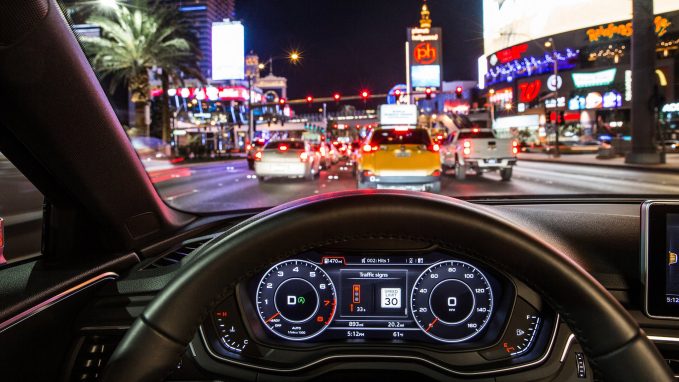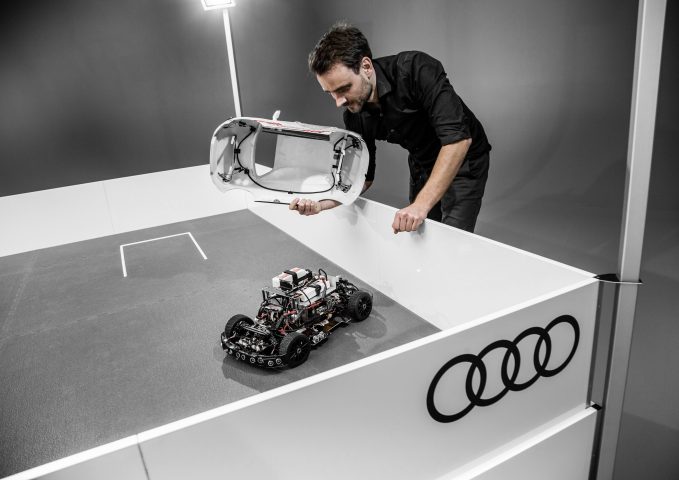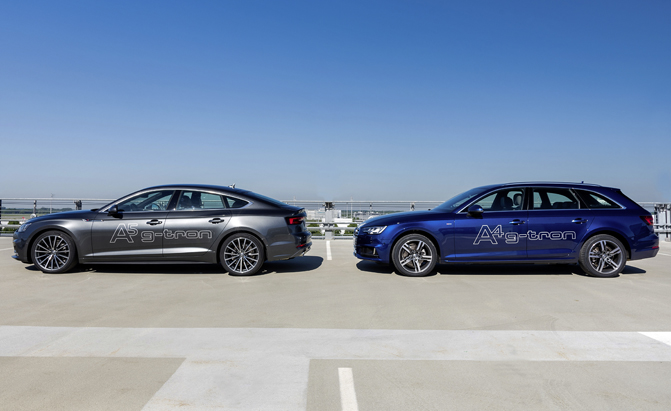Audi has one eye keenly fixed on the future of mobility, and that means moving beyond building cars to become a leading technology company.
That’s the automaker’s outlook moving forward, with a three-pronged approach focused on digitalization, urbanization, and sustainability. And it’s the first point that Audi expects to carry the most weight as it makes the transition into the technology space.
“Digitalization is much more than just one of the three levers; it’s in many ways the critical enabler for the other two,” Audi’s chief digital officer, Roland Villinger, said during the inaugural Audi Summit in Barcelona, Spain.
Providing workable solutions obviously starts with electric vehicles, and that’s something Audi is already close to with the e-tron Quattro electric SUV coming next year, followed by the all-electric models in both 2019 and 2020. But the automaker also plans to electrify all of its product lines moving forward, whether that means all-electric variants or gas-electric hybrid versions of each of its offerings.

“But the electrification of cars cannot only be about the car itself — it has to be about the infrastructure too,” Villinger said, noting complete solutions make electrified vehicles more attractive to customers. “Which is why we are developing wireless charging, [as well as] collaborating with a number of OEMs to develop the first high-performance charging network.”
ALSO SEE: Tech-Filled 2018 Audi A8 Debuts With Robust Self-Driving Suite
Looking beyond the realm of electrification, Audi is also exploring ways to improve not just the emissions of the end product, but also the production process itself. And that means improving efficiencies where possible, from both landfill and energy supply perspectives.
“When you take sustainability seriously, you need to take a more holistic view than just looking at the tailpipe,” Villinger said. “We want to not only make cars better, we want to make the world better. And in order to do that, we need to build clean cars and clean factories.”

With the e-tron Quattro an obvious place to start, Audi plans to improve the emissions of its plant in Brussels, Belgium, to the point that it’s carbon dioxide neutral “in the coming years.” Audi already gets all the electricity for the plant that will build the all-electric sport utility from renewable sources, but other measures, such as cogeneration and even the installation of LED light fixtures, will help reduce consumption at the plant to the point of self-sufficiency.
Beyond sustainability, Audi, like virtually every other automaker, is incorporating more and more digital products and services into its vehicles. Some are predicated upon improved connectivity while others are based on improving congestion in urban areas. And that’s why Audi is developing technologies like smart infrastructure that connect vehicles with traffic lights to improve the flow of traffic, thus easing congestion. Villinger said autonomous driving will also help ease congestion by automatically diverting vehicles to alternate routes.
“We believe this will be so (important) because our customers appreciate the freedom and independence individual mobility solutions provide them with,” Villinger said. “But the car has to move on from a cause of problems to being a part of the solution.”

That means enabling vehicles to not only use the most efficient route possible, but also one that keeps cars that need to be plugged in close to charging stations for fast and easy access to more electrons on the go. It also means connecting vehicles to smart grid technologies that can help them negotiate congestion without driver input.
Of course, the downside to doing all of this is simply making it all happen. While the 2018 Audi A8 is capable of Level 3 autonomy, an already complex suite of technologies, the brand is striving for Level 5, the ultimate in driverless vehicles. That’s a lot that can go wrong.
“Any discussion of digitalization for me begins with a discussion of complexity,” Audi’s head of digitalization, John Newman, said, pointing out that as vehicles become more connected, they become more complicated to build and, perhaps more importantly, operate. “More than 30 different new digital products and services were introduced [by Audi] over the last 20 years. And if you pick a single digital product or service, it turns out that’s evolved over time and become increasingly rich in terms of content and features and functionality.
ALSO SEE: Here’s How Audi Plans to Scrap the Assembly Line
“And so on the one hand, the optimist in me says this is great — this is great value for the customer. But on the other hand, the realist in me says perhaps we’re actually leaving our customers behind as we introduce more digital products and services into vehicles.”
Audi is no stranger to J.D. Power’s annual analysis of digital products and services — known as the Tech Experience Index — and knows as well as its customers that some of what it puts into its vehicles isn’t easy to use or overly reliable.

“I would say inside Audi, even though we don’t publicly disclose it, we’re aware that we put digital products and services into our vehicles that are rarely if ever used,” Newman said. “And for us, that’s not a sign of developing and delivering a premium mobility experience. That’s a sign that we have further work to do.”
But just as digitalization can make operating an automobile more complicated, Newman said it can also be a “powerful tool” that can also simplify the in-car experience. It’s also an unavoidable one. As demand for connectivity increases with each passing year, you can count on more and technology making its way into new vehicles. And you can count on Audi being somewhere at the forefront of it all.



Leave a Reply